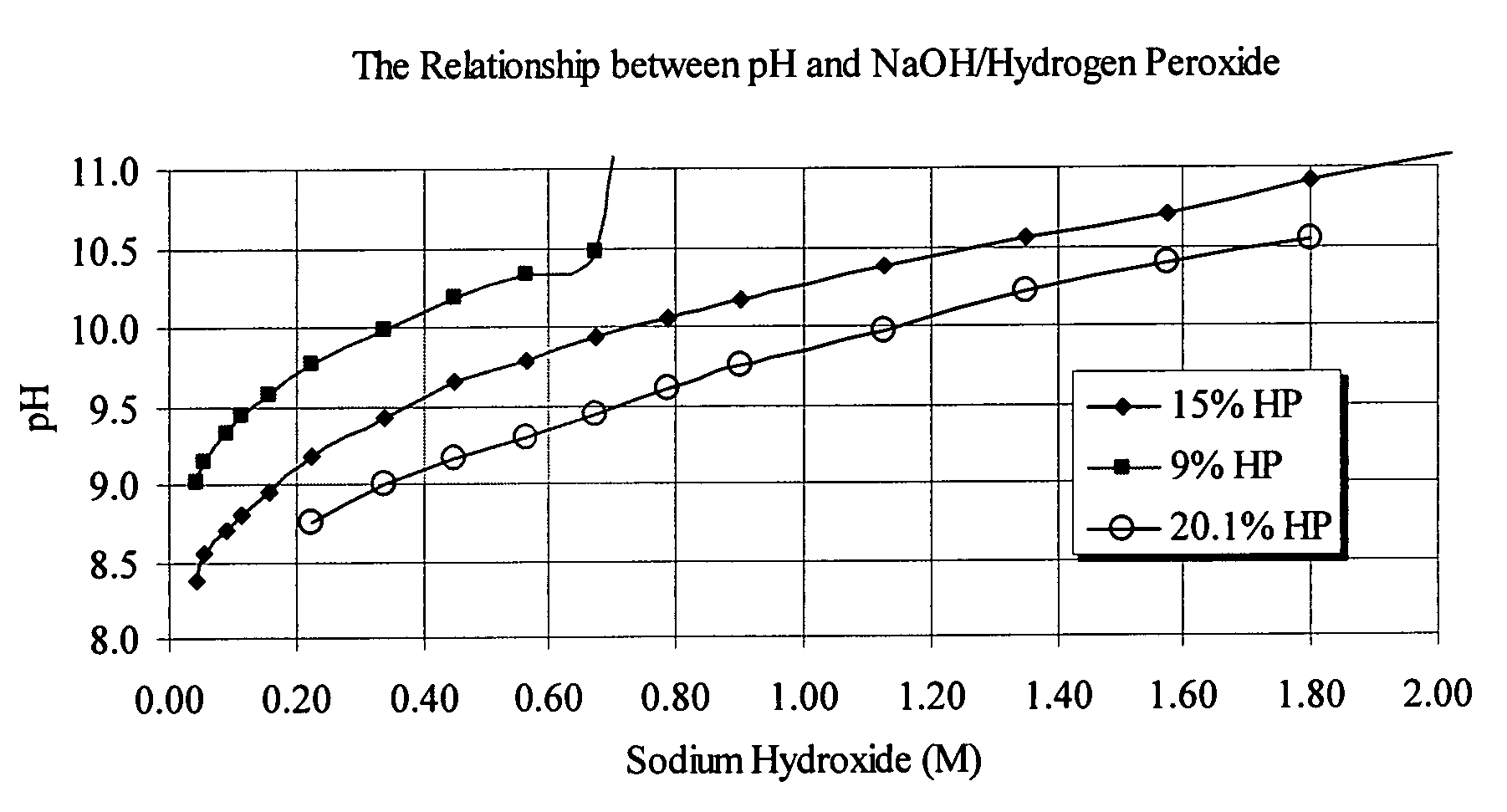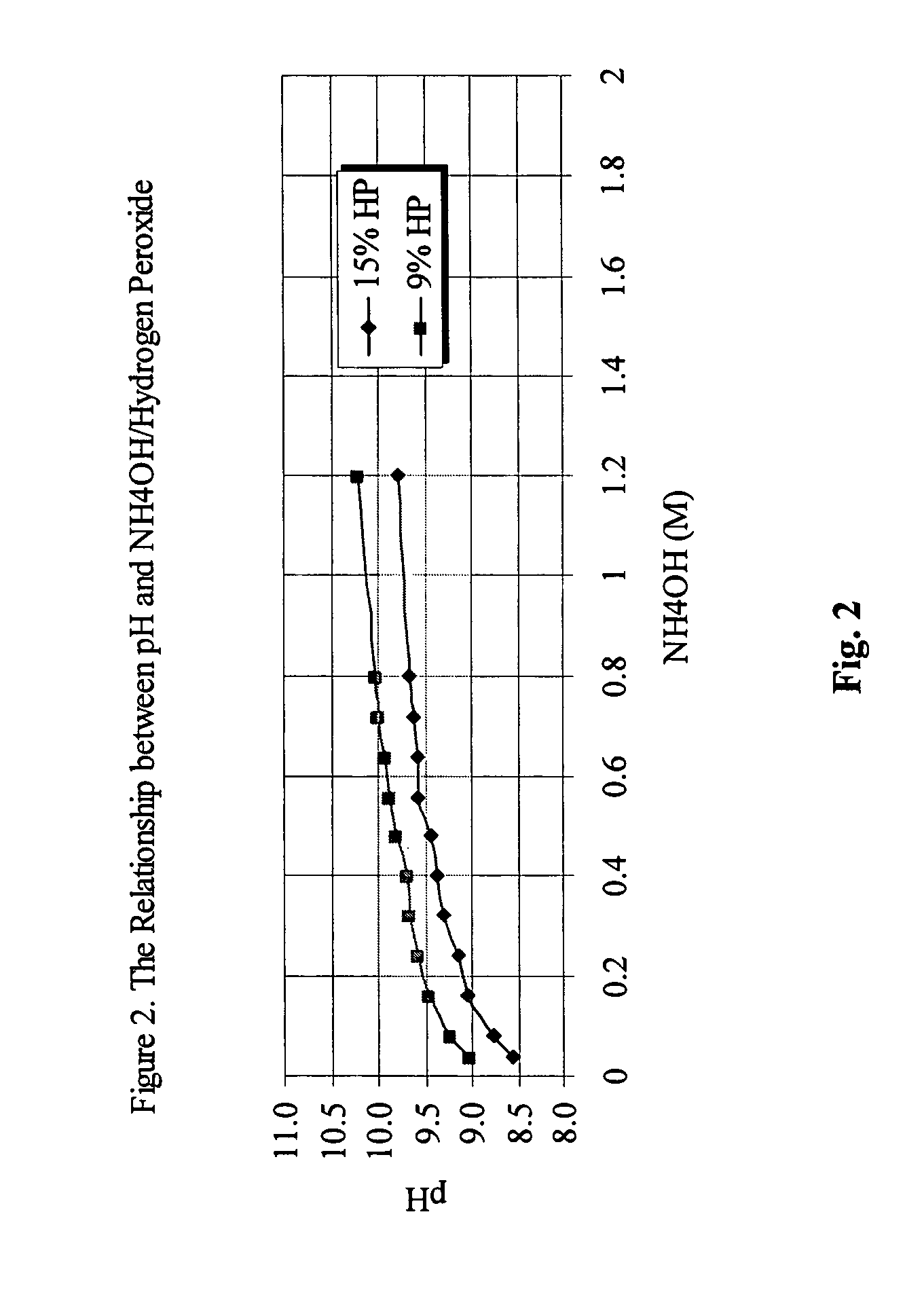Formulations for the decontamination of toxic chemicals
a technology for toxic chemicals and forms, applied in the field of forms for the decontamination of toxic chemicals, can solve the problems of difficult destruction of toxic chemicals, insolubility in aqueous solutions, and propensity to react with persistent toxic reaction products, and achieve rapid neutralization of toxic chemicals, high challenge levels, and improved reactivity and solubility of toxic chemicals
- Summary
- Abstract
- Description
- Claims
- Application Information
AI Technical Summary
Benefits of technology
Problems solved by technology
Method used
Image
Examples
Embodiment Construction
[0028]The principal active species in the formulation are the peroxy anion (HOO−), which causes perhydrolysis, and the oxidant ‘M’Ox+n. The formulations contain additional potentiating ingredients which improve toxant solubility and reactivity, and which result in good surface interaction and wettability by the decontaminant. Three typical formulations are exhibited in Table I. These formulations are called ‘Chemical Decontamination Solution (CDS) —X, —Y, and —Z, and vary by their content of metal oxide catalyst. In Table I, the ingredients are listed in row 2 (from the top of the sub-table for each formulation), e.g., H2O2, the starting concentrations are given in row 3, e.g., H2O2: 30%, the volume added to the mixture is given in rows 4 and 5, e.g., 2.50 ml of 30% H2O2, and the final percentage or concentration in the composition is given in the bottom two rows, e.g., H2O2: 15%.
[0029]
TABLE IExamples of formulations of the Chemical DecontaminationSolution (CDS)CDS-X Part ACDS-X, PA...
PUM
| Property | Measurement | Unit |
|---|---|---|
| temperature | aaaaa | aaaaa |
| temperature | aaaaa | aaaaa |
| concentration | aaaaa | aaaaa |
Abstract
Description
Claims
Application Information
 Login to View More
Login to View More - R&D
- Intellectual Property
- Life Sciences
- Materials
- Tech Scout
- Unparalleled Data Quality
- Higher Quality Content
- 60% Fewer Hallucinations
Browse by: Latest US Patents, China's latest patents, Technical Efficacy Thesaurus, Application Domain, Technology Topic, Popular Technical Reports.
© 2025 PatSnap. All rights reserved.Legal|Privacy policy|Modern Slavery Act Transparency Statement|Sitemap|About US| Contact US: help@patsnap.com



